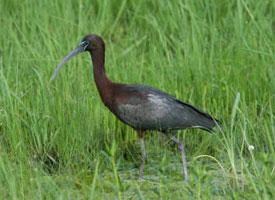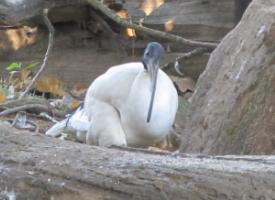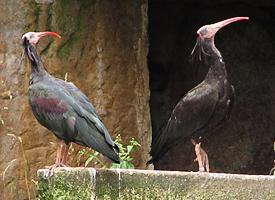
Állatleírás
The Glossy Ibis (Plegadis falcinellus) is a captivating bird species belonging to the Threskiornithidae family, which also includes other ibises and spoonbills. This bird is notable for its widespread distribution, inhabiting wetlands across various continents including Europe, Asia, Africa, Australia, and the Americas. The adaptability of the Glossy Ibis to diverse habitats underscores its ecological versatility, thriving in environments ranging from marshes, wetlands, and mudflats to lagoons and riverbanks.Characterized by its striking appearance, the Glossy Ibis stands out with its slender, curved bill and long legs, both of which are essential adaptations for its feeding habits. The bill, particularly, is a specialized tool that allows the bird to probe into the mud and shallow waters for its prey, which includes insects, small fish, frogs, and various aquatic invertebrates. This bird is a tactile feeder, relying on the sense of touch to locate its food rather than sight.
The plumage of the Glossy Ibis is where it truly lives up to its name. While at first glance it may appear uniformly dark, upon closer inspection or under the right lighting conditions, the feathers reveal a mesmerizing array of iridescent colors. Shades of glossy green, bronze, and purple sheen elegantly across its body, making it a spectacular sight to behold, especially during the breeding season when these colors become more vibrant.
The bird's body is medium-sized, with adults typically reaching lengths of about 55-65 cm (22-26 inches) and displaying a wingspan of approximately 80-105 cm (31-41 inches). The sexual dimorphism in this species is minimal, with males and females appearing similar in size and coloration. However, males may be slightly larger and have more pronounced iridescence during the breeding season.
Breeding behaviors of the Glossy Ibis are as fascinating as their physical attributes. They are colonial nesters, often forming large breeding colonies with other wetland birds. Nests are usually constructed from reeds, twigs, and other vegetation, placed in trees, bushes, or even on the ground, depending on the location. Both parents are involved in nest building, incubation of the eggs, and feeding of the young, demonstrating a strong parental investment in the survival of their offspring.
The migratory patterns of the Glossy Ibis vary with populations in different regions. While some groups are sedentary, others undertake seasonal migrations to exploit the changing availability of wetland habitats. These movements highlight the bird's adaptability and the importance of conserving interconnected wetland ecosystems across its range to ensure its survival.
Despite facing threats from habitat loss, pollution, and climate change, the Glossy Ibis has maintained a relatively stable global population. It is classified as Least Concern by the International Union for Conservation of Nature (IUCN), thanks in part to its wide distribution and adaptability. However, continued efforts in wetland conservation and monitoring are essential to safeguard the future of this remarkable bird species.
In summary, the Glossy Ibis is a symbol of the beauty and complexity of wetland ecosystems. Its presence indicates healthy, functioning habitats, and its conservation is vital for maintaining biodiversity. The bird's adaptability, striking iridescent plumage, and intriguing behaviors make it a subject of admiration and an important species for ecological study and conservation efforts.
Hasonló állatok
Új állatfotók
Top 10 állat
- Dolphin gull (Leucophaeus scoresbii)
- Japanese macaque (Macaca fuscata)
- Stone loach (Barbatula barbatula)
- Russian tortoise (Testudo horsfieldii)
- Galápagos tortoise (Geochelone nigra complex)
- Greek tortoise (Testudo graeca)
- Diana monkey (Cercopithecus diana)
- Common flying dragon (Draco volans)
- Moustached guenon (Cercopithecus cephus)
- Galápagos penguin (Spheniscus mendiculus)


